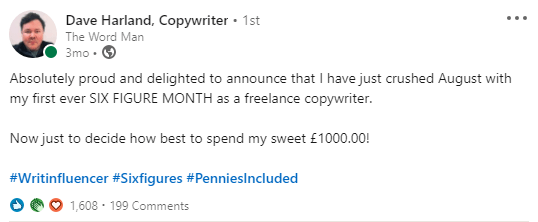There are few better career moves than choosing to become a freelance copywriter in 2021.
Freelance copywriters are in higher demand than ever before and freelancing itself is has never been a more viable alternative to a full-time job than right now.
Many of the top copywriters bring in more than $100k per year.
These aren’t pie in the sky numbers either. Many of my copywriting friends earn this (and with any luck I’ll be able to hit the same figures soon).
But when you’re just starting out, it can be difficult to know what skills you need, how to find your first client, who to ask for help, and even what to charge. It isn’t as simple as sitting down at your computer and deciding to be self-employed – freelancing is SO much more than that.
Copywriting, meanwhile, is a specific skill that can take years to learn and refine.
That’s why I’ve put together this MAMMOTH post. You don’t need to spend years searching for the best resources and step-by-step advice on skills, equipment, or pricing. It’s all right here!
So, if you want to learn how to start your own freelance copywriting business, then friend, this is the post for you!
Everything you need to know to become a freelance copywriter in 2021
In this guide, we’re going to take a look at why you should seriously consider becoming a freelance copywriter and how you can succeed within the wonderful world of copywriting…even if you have ZERO experience!
(Heads up, even though I’ve made this as useful for newbies as possible, even seasoned copywriters should benefit from refreshing their knowledge and the resources to help you grow your business.)
It’s over 10,500 words, so you’ll probably want to bookmark this page so you can come back to it anytime you want.
So, if you’re ready to dive in, here’s what we’ll be covering…
How to become a freelance copywriter in 2021
Why you should become a freelance copywriter
The need for skilled freelancers is growing at an incredible rate…
Before the Coronavirus pandemic seemed to swallow the world, it was estimated that by 2027, 50.9% of the US workforce will be freelance.
Since COVID-19 has accelerated this trend and increased the number of freelancers, this number may be even higher in 2027 than originally estimated.
As the work-force changes to become more remote, many businesses are realising it makes more sense to hire copywriters who work on a freelance basis than hire them for in-house roles.
Pair that with the fact that many copywriters have cracked multiple six figures per year and you can see why a career as a freelance copywriter is so appealing.
There’s really no better time to start than now!
My freelance copywriting story
If you just want to get to the juicy bits, please feel free to skip ahead. But if you’re wondering why I chose to pursue a career as a freelance copywriter, then read on!
My name is Nelson Jordan and I’ve worked in digital marketing for over a decade. I have a Master of Science in Marketing. I’ve been lucky enough to work for an agency, for myself and even a short stint in-house at the beginning of my career.
I’ve worked in paid social media, PPC and SEO…so why did I leave that all behind for copywriting?
For me, it was a personal choice.
Despite making a healthy income from managing paid traffic acquisition on a freelance basis, I no longer felt creative. I wasn’t enjoying work and as a result my business wasn’t growing. I realised I needed a new outlet.
Enter copywriting…
Freelance copywriting gives me everything I need – oodles of opportunity for creativity, a ridiculous amount of freedom, an income that lets me provide for my family and an activity that actually excites me.
Don’t underestimate the positive impact that actually wanting to turn up to work can have on every aspect of your life!
If you want to…
- Control how much you work and when
- Master an in-demand skill
- Make a high salary
- Be genuinely happy with how you spend your days
…then a career as a freelance copywriter could be what you’re looking for.
What is a copywriter?
A copywriter is someone who works in-house, for an agency, or freelance, to create copy (the fancy industry term for ‘words’) that acts as a 24/7 sales-person. The copy they write is designed to convert prospects into leads or customers.
It’s a copywriter’s job to get inside the heads of their audience and use this information to turn them into customers.
Copywriting vs content marketing
It’s really, really common for people to confuse these – even marketers. However, they’re two very different things.
Direct response copywriting is about inciting action and generating sales. It includes home pages, sales pages, opt-in pages, automated email flows and more.
Content marketing is about nurturing prospects and building relationships with them so that they buy from you in the future or continue to use your product or service.
It can include blog posts, podcasts, videos, email campaigns and social media. If what you’re writing isn’t designed to sell, but rather to educate, inform or entertain, there’s a good chance it falls under the content marketing umbrella.
Types of copywriting
Copywriting comes in many forms, including:
- Web/Landing pages, like home pages and sales pages
- Social media ads
- Email campaigns
- Video scripts
- Video sales letter (VSL)
- Podcast script
- User guides
Some copywriters specialise in a particular type of copy. Others don’t. Feel free to experiment and go with whatever feels right to you.
I specialise in web copy and SEO blog content. Web copy can include home pages, service pages, sales-pages and lead magnet opt-ins, among others.
SEO blog content refers to content that’s specifically designed to rank that page for a target keyword in Google.
I also work on other forms of copy, such as email automation flows, but don’t prioritise these in my own marketing or cold pitching efforts, unless I think the specific client will see a large return from it.
What does it mean to be a freelancer?
Ok, so copywriting sounds kinda fun and lucrative, right? But why become a freelance copywriter, rather than work in-house or for an agency?
In-house
Businesses who hire copywriters to work in-house see the value in copywriting. They normally look for someone who is comfortable writing many different types of copy, rather than someone who specialises in a particular format (e.g. web pages or SEO-optimised blog articles.)
They provide a regular salary and all the usual benefits you’d expect as an employee. However, your income will always be capped and it’s tough to become a top earner in-house, without racking up many years or decades of experience.
Agency
There are also copywriting agencies that employ staff or outsource the work to freelancers. Writing for an agency can be a great way to build your experience. You’re not responsible for bringing on new clients, just doing the work, so you can focus on building your copywriting chops, not stressing about pitching or invoicing.
On the flip side, though, even in a senior copywriting position in an agency, you may struggle to generate anywhere near as much income as a freelance copywriter.
Freelancing
As a freelance copywriter you’re responsible for every aspect of your business. Bringing in clients, keeping them happy, producing quality copy, invoicing and taxes. If you don’t do it well, you don’t make any money. If you have a rough month, you don’t make any money. You bear all the risk – you’re not an employee so there’s no-one coming to bail you out with a paycheque.
But with that risk comes the prospect of great reward. Every top earner I know in the copywriting industry is a freelancer. Many fantastic copywriters start off in-house or with an agency and realise they could do the same thing on their own schedule and make a lot more money.
Whether you choose to work in-house, for an agency or for yourself depends on your opportunities, the stage of your career, whether you want to dive in full-time or part-time (another positive of freelancing is that you can start doing it in your own time and keep your old job), and what your goals are.
Read on to see if freelance copywriting is for you…
(Want to know more about what it takes to become a freelance copywriter? Read this…)
Benefits of Freelancing

Freelance copywriters have more control over their time
You don’t have to work from nine until five if you don’t want to. You can work around school pickups, social commitments, or even your preferred sleeping pattern (hoot, hoot, night owl!)
So long as you get the work done, clients don’t mind when you sit down to do it or where you do it from (helloooooo sandy beach in Thailand!)
Freelance copywriters can earn more money by working less
Now this isn’t always the case – it depends on how much you work, how experienced you are, how well you’re able to build your business and who your audience is – but in a lot of cases, freelancing pays much better because businesses are prepared to pay for the results your specialist knowledge can generate.
A good copywriter is worth their weight in gold because they’re able to increase a business’s earning potential dramatically.
Let’s take a quick look at some numbers…
Pro Copywriters found that the average day rate for a UK-based copywriter in 2020 was £379.
And although this survey was done back in 2017, Copyhackers found that:
73% of respondents charged between $50 and $149 per hour, and
54% of respondents charged at least $1,000 per project
Although many copywriters start small, after a year or two they can grow their business to six figures – something that’s not as easily done in other industries.
You don’t need a college or university degree to become a freelance copywriter
Sure, you’ll need copywriting training, but you don’t need to spend four years busting your hump at an ‘accredited institution’ to emerge with thousands of dollars in crippling debt to become an in-demand freelance copywriter…just solid writing chops and an understanding of how to grow your business.
Not a single client has EVER asked me where I studied or if I have a degree. Not one.
They’re more interested in hearing how I would go about growing their revenue and seeing examples of past work than hearing how many hangovers I accrued and lectures I missed (Many and lots, respectively.)
Downsides to freelancing + how to overcome these

When you freelance, income can be unpredictable
The good months can make your old salary look like peanuts, while the bad can make you crave the safety and consistency of a monthly wage, especially at the beginning of your career.
When you start out, you may not earn enough to cover your outgoings. You may find that one month you seem to have lots of clients and then you just can’t catch a break for the next three.
This is a risk all freelancers take, but there are steps you can take to improve your chance of success, such as building up a savings buffer, freelancing while still working a full-time or part-time job, or working extra hours at a lower rate to make ends meet.
Scraping by isn’t the goal, obviously, but preparing yourself for this situation ‘just in case’ will help to ease the pressure when the going gets tough.
To freelance successfully, you must also be self-motivated
A lot of people become self-employed to escape the daily grind. I certainly did.
Don’t get me wrong – my old agency was incredibly good to me, even giving me the go-ahead to move to Valencia in Spain and commute to the office once a month for all my meetings. I was living the dream!
Eventually though, the travel, combined with a salary that wasn’t growing as fast as I wanted, became too much for me and I decided to strike out on my own – a scary decision that worked out incredibly well.
Self-motivation is an important skill and harder than it sounds. You have to be motivated not just to get the work done, but also to keep growing your skills and knowledge so that you can run your business to the best of your ability.
Most people need consistency more than they need intensity.
— James Clear (@JamesClear) June 15, 2019
Intensity:
-run a marathon
-write a book in 30 days
-silent meditation retreat
Consistency:
-don't miss a workout for 2 years
-write every week
-daily silence
Intensity makes a good story. Consistency makes progress.
(FYI, If you want to understand motivation and up your output, I’d recommend Daniel H. Pink’s book, Drive. or James Clear’s Atomic Habits)
Being responsible for your own time management and focus can be a serious brain-drain, especially if you work from home and are surrounded by distractions. Oh Netflix, how I both love and loathe you.
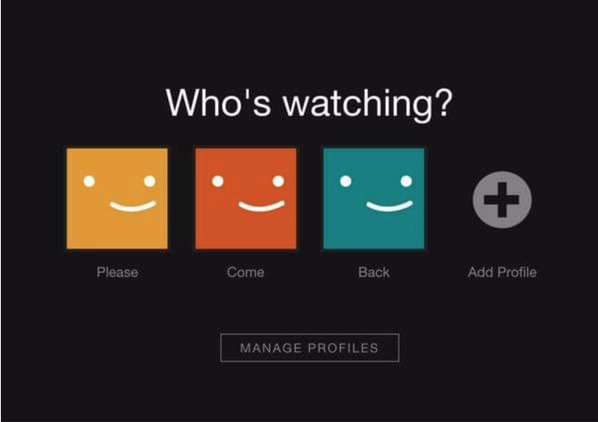
It helps to have somewhere specific that you use for work, whether that’s a separate office or corner of a room. For the love of all that is cosy, DO NOT work from your bed. Don’t do it to yourself.
If you don’t have a specific work area, try to establish a regular routine you can carry out to signal your brain that it’s time to switch contexts and get into work mode. Make yourself a coffee (not Irish), play a calming piece of music and tell yourself you’re sitting down to work, not to play.
Why are freelance copywriters so in-demand?
To put it simply, copywriting is hard. Anyone can string a few sentences together and call themselves a copywriter. But knowing which words to use in order to sell is a different ballpark altogether.
Quality copywriting is a combination of writing, psychology, marketing, and sales skills. Each skill takes time to master – knowing how to combine them effectively sets you apart from the competition.
The right copy at the right time can change a business’s fortunes for the better. More businesses are realising that to grow, they need expert copywriters in their corner. That could soon be you…
What skills do copywriters need?
Copywriting is about so much more than just combining words into sentences or being a great editor. To convince your audience with copy, you need to master these copywriting skills:
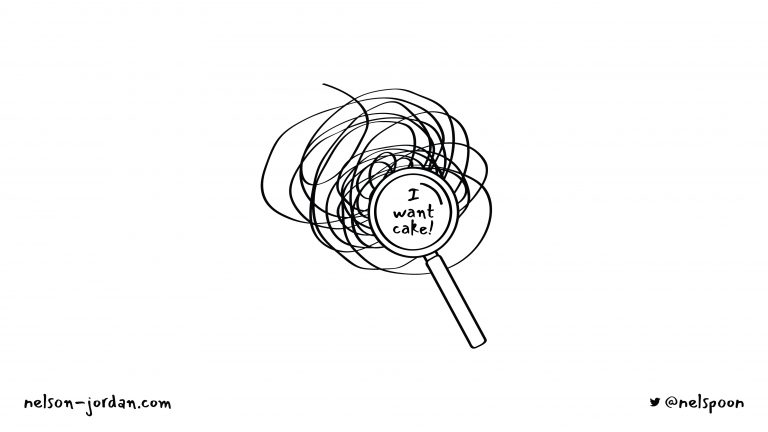
Psychology
Psychology is a key part of copywriting. Without an understanding of psychology, you’ll struggle to understand what your audience wants.
The novice copywriter selling a lawn service will talk about the low, low prices of the gardener, the top-of-the-line tools they use and how reliable they are, even during winter.
The accomplished copywriter will talk about the sense of pride their customers will feel when they own the best-looking garden in the neighbourhood, how they’ll be the envy of everyone on the block and how even the local cats will stop pooping on their lawn once they see how neat it looks.
There are many ways to study psychology…courses, books, observing people. A combination of all three will get you there the fastest.
Email marketing gurus Rob and Kennedy use their backgrounds as a hypnotist and mind reader (sometimes called a mentalist) in their copywriting. They know how close the link is between psychology and audience behaviour, and they use that to their advantage.
Their podcast, The Email Marketing Show, looks at different aspects of email marketing every week. Their membership community, The League of Extraordinary Email Marketers, gives members templates, advice, and more, to help them improve their email marketing strategy – whatever size their list is.
If you’d like to do some more reading on psychology, you should read Robert Cialdini’s ‘Influence: The Psychology of Persuasion’. While not technically a marketing or copywriting book, it’s one of the most popular books in marketing for a reason: it breaks down seven psychological techniques you can use in your copywriting to increase conversions. If you’re going to start somewhere, it should be here.
I also touch on elements of Psychology from time to time in my weekly newsletter. If you’re not signed up, you really should be.
Persuasive writing
This ties into psychology. Persuasive writing is about taking your understanding of human behaviour and putting it down on the page in the form of those squiggly characters we know as letters and words.
Persuasive writing skills teach you which words and phrases you need to use to get the desired reaction out of your prospect. You can learn to use the more effective, emotive words and avoid the ones that will make your audience’s brain switch off from boredom.
More than that though, it’s about understanding the customer journey, their stage of awareness and laying out the most compelling argument you can, using…
Writing frameworks
There are many writing frameworks out there that act as starting points for creating good copy. Their effectiveness often depends on how they’re used and the product or service they’re selling.
If you’re not sure what a writing framework is, or want a more in-depth look, head over to Copyhackers.
PAS
PAS is one of the most well-known – and well-used – copywriting frameworks out there. It stands for Problem, Agitation, Solution, or sometimes Problem, Agitate, Solve, depending on who you ask.
In the Problem section, you need to show empathy towards your prospect’s situation. Get them nodding along, like ‘yup, that’s me alright!’
Now it’s time for Agitation. It’s time to really make them feel it. What could their life be like if they don’t fix the problem they’re facing? What are they missing out on if they don’t purchase your product or service?
Finally, bring it home with Solution. Position your product or service as the best way to fix their problems.
And, most importantly, don’t just tell them what features they get. Focus on benefits. Show them the transformation they’ll achieve if they purchase from you. Remember – people buy better versions of themselves. Your product or service is just the vehicle to get them there.
Example
Let’s use an imaginary course for freelancers as an example:
Problem: You’ve just started freelancing and you don’t know where to start. It’s overwhelming and you don’t have enough (or any!) clients.
Agitation: Your friends have already not-so-subtly started linking you to jobs they think you’re qualified for, your parents have offered to lend you money and your bank balance is worryingly close to the red. You’re feeling the squeeze and the anxiety is weighing heavy on your shoulders.
Solution: My new freelancing course will put your bank balance firmly back in the black. You’ll learn how to attract prospects and provide a service they love. They’ll be throwing money at you in no time. Watch your confidence soar and prove the naysayers wrong once and for all.
PASO
You can always take Problem, Agitation, Solution even further. Add an extra ‘O’ and you get Outcome. Use that extra vowel to demonstrate how different your audience’s life could be if they used your solution.
The outcome could come in the form of a result, statistic, testimonial, or a form of social proof.
Example
Let’s go back to the example from the previous section and add an outcome on to the end.
Outcome: Go from making $50 per article to $5,000 per month and pay off your parents’ mortgage.
If you can paint your audience a picture of what their life could look like and what they’ll accomplish and how they’ll feel they’re more likely to take the steps to achieve it…i.e. buy your product or service.
AIDA
AIDA stands for Attention, Interest, Desire, Action.
In this framework, you need a catchy title and opening paragraph to grab their Attention. Like the PAS framework, this must establish that you understand your audience’s situation.
Interest is where you pique their curiosity. Desire is where you attract them to whatever you’re selling, because it helps them get what they want.
And finally, Action is where you summarise and move your prospects to a conversion, be it a download, add to cart, opt-in or purchase.
Now let’s try the freelance course example using AIDA.
Attention: Want to earn $15,000 a month?
Interest: Some of the highest paid freelance copywriters earn just that.
Desire: High-paying clients are just waiting to work with you.
Action: Discover how to find them in my new course.
It’s pretty universal to want to earn more money. And many freelancers are prone to undercharging. The headline of earning $15,000 a month therefore immediately grabs someone’s attention because it sounds impossible, but it can be done.
We continue to pique their interest with the fact that there are copywriters out there who earn just that.
Then, we convince them that high-paying clients really do want to work with them…if only said clients knew they existed.
Which leads to the final section, action, where we tell them how to get the outcome they desire.
There are three skills you need to improve your writing that don't involve writing anything at all.
— Kaleigh Moore (@kaleighf) December 4, 2020
1. Endless curiosity
2. A passion for reading
3. An ability to cut and edit with a clinical approach
Editing and proofreading
"To write is human, to edit is divine"
74% of web readers pay attention to the quality of spelling and grammar, and 59% are less likely to work with a business if it’s bad. I’m surprised it’s not higher.
If you know your editing and proofreading skills need work, you have several options. You could always outsource it, which will save you time but reduce how much you earn for the job.
You could invest in a course to help you improve your skills, or you could use software like Grammarly or ProWritingAid. Both help you improve your writing but highlight different things, so think about which skills you want to develop before making your decision.
If you’re serious about improving, you could use a combination of all three. There’s no harm in running something through an editing software before sending it to a human editor or proofreader. Make sure they explain any changes they make – this will mean your work improves and you’re less likely to make similar mistakes going forwards.
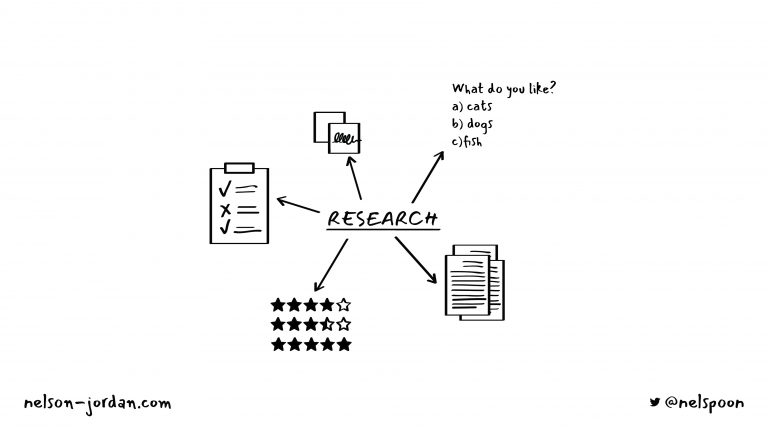
Research
Research is an incredibly important, but often overlooked part of copywriting.
The better you know your customers – their problems and desires – the more effective your copy will be at converting them.
The more in-depth research you do at this stage, the easier your copy will be to write, too. You’ll know exactly which buttons to push and when.
I’d say that if you do your research right, you may even find that as much as 70% of what you write comes straight from your target customer’s mouth (or fingers). I routinely lift some of my best headlines, sub headers and phrases directly from customer interviews.
If you listen, customers tell you EXACTLY what they want. So why not let them do the writing for you?

The perfect lead profile
Some people use customer personas to put together a picture of the client’s ideal customer. I prefer the perfect lead profile, which I first heard about through Copyhackers.
Here are the things you need to know about your customer to create your own perfect lead profile:
1. Unresolved problem
Here, you need to know: what is their biggest challenge? What’s standing in the way of them achieving the outcome they want?

2. Unachieved outcome (because they can’t resolve the problem)
What’s the most important outcome to them right now that will solve their problem?
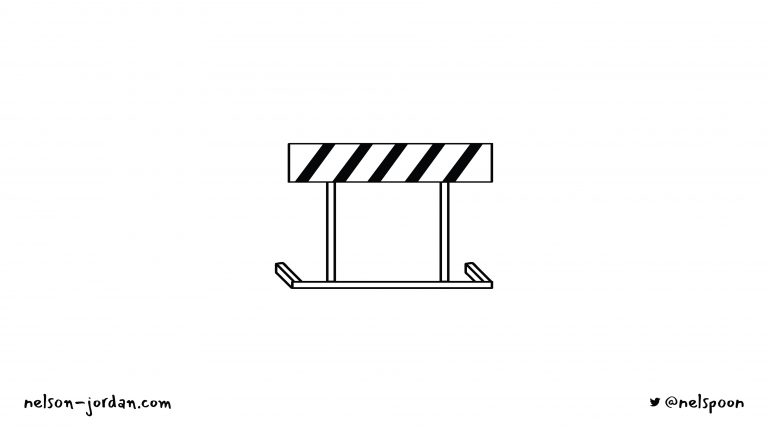
3. Unfulfilled desire
What do they want to feel when their outcome is achieved? What do they want their life to look like?

4. Levels of awareness
Each level of audience awareness requires a different approach to copywriting.
- Unaware: They don’t know they have a problem that needs solving (yet). Or they may not be ready to admit they have a problem.
- Problem aware: Problem-aware people know they have an issue, may recognise the need to solve their issue, but don’t know what the solution is.
- Solution aware: They know a solution exists to their problem, but don’t know about specific companies, products or services.
- Product/service aware: These people are aware of the product/service and know what it offers, but aren’t convinced or ready to buy just yet.
- Most aware: People in this bracket know about your product or service. They may be ready to buy, in the process of buying, or have already purchased.
Typically, direct response copywriters that focus on conversions will target the middle to the bottom of the sales funnel. That means solution-aware, product/service aware and most aware.
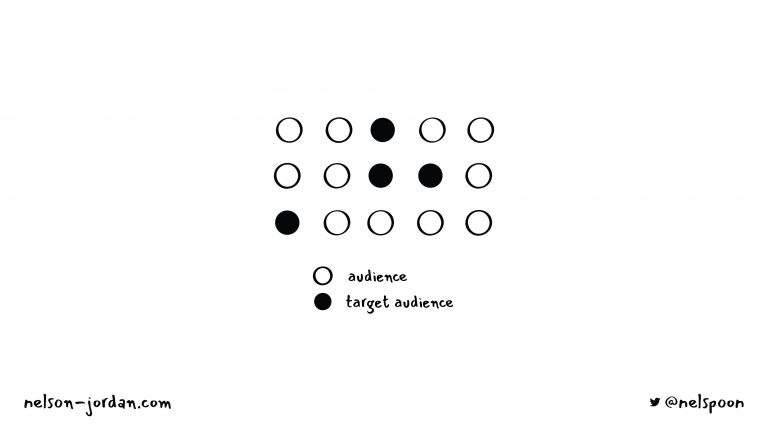
5. Psychographics
Demographics focus on understanding your audience’s age, sex, race, location and more.
Psychographics focus on your audiences’ emotions, attitudes, and aspirations to help you understand their beliefs, desires, and feelings – essentially the WHY behind their actions.
Demographics can be useful, but psychographics are where the really interesting insights lie.
Tapping into your audiences’ psychographics allows you to get to the heart of what they want in life. You can then write a copy that answers all of their questions and convinces them your product or service is the one to help them.
Take a look at this Hubspot guide if you want to dig into psychographics further.
But how do you find out this info?
I’m so glad you asked…the answer is external and internal research.
External research
This means looking outside of the company you’re working with to gather information.
External research can take the form of:
Interviews and focus groups
Surveys and polls
Social media listening
Review mining on sites like Amazon, Reddit or G2Crowd
Forums, blogs, and article comments
Academic studies and research papers
Industry/market news and trends
Each of these will reveal a different type of data, so don’t rely on one and assume you’re done.
Each research method requires a different approach.
You can embed surveys and polls on a website to reach a large audience, for example. You need to keep questions short if you want them to answer them in this context, though.
Someone who’s agreed to do an interview or be a part of a focus group will be much more willing to give you in-depth answers and have more words and phrases you can use. If you’re doing this online, make sure you have their permission to record the call so that you don’t miss out on anything or interrupt the flow of the conversation to write things down.
Reviews are useful to get to know what people want and need and understand other solutions in the marketplace.
It can be useful to read reviews on products that aren’t direct competitors, but are a part of your industry. For instance, a HR-related book review on Amazon can help with copy for a HR service. This is because you’ll still get a feel for the problems your audience experience and the language they use, even if the book isn’t about the exact same service your client offers.
Internal research
Internal research comes from the company you’re working with. It could be research they’ve already conducted, or information you get from talking to them.
Examples include:
Interviews and focus groups
Case studies
Surveys and polls
Existing marketing materials
Existing offers for the product or service
Existing sales content
Results of previous tests and experiments
Transcripts from support calls
Analytics, heatmaps, and session recordings
The results of previous tests and experiments, along with heatmaps and session recordings, will help you understand what works and what doesn’t work with their audience. For instance, do they like a call to action near the top of the page, or does this cause fewer conversions?
Look at your client’s existing research (make sure you’re charging them for this time), look for gaps, then figure out what research you need to do to fill them in.
This is why I'm bullish on case studies and customer success stories as an asset.
— Joel Klettke (@JoelKlettke) December 1, 2020
Because when they're done right -- credible, detailed, compelling, beautiful -- they're one of the few things no competitor can steal on a whim.
What skills do freelancers need?

Becoming a high-earning, in-demand freelance copywriter is about much more than just knowing how to chuck a couple of words together like a bowl of alphabet spaghetti.
A freelance copywriter must wear many hats – writer, salesperson, businessperson, entrepreneur, psychologist, marketer, and manager.
And, if I can be real here for a moment – not everyone is capable of becoming a good freelancer….and that’s ok!
You can be a great writer but still have a tough time carving out a living as a freelancer if you don’t have the skills to build your business, manage your time and attract clients.
If you want a career as a copywriter but don’t feel comfortable working for yourself, you can write for an agency or in-house. There’s not just one way of doing things, so don’t let others tell you that you HAVE to be a freelancer to be a copywriter. That’s not the case. But if you think you might have what it takes to become a great freelancer as well as a stellar copywriter, read on!
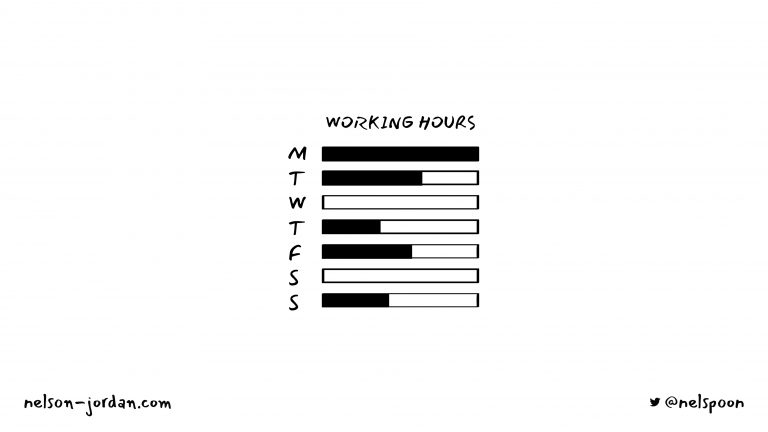
Time management
Time management helps you meet client deadlines and decide how much you should charge per project. You need to be able to manage multiple client projects at the same time as marketing your business and living your life.
No one becomes a freelancer to work eighteen-hour days. If you’re not careful, you can quickly rack up the hours if you have a lot on your plate, but this leads to burnout before long.
Effective time management means you know roughly how long each project will take you and you can plan to tackle multiple projects at the same time.
You could try using a time-tracking software like Clockify, which will show you where you spend your computer time and how long projects take.
Alternatively, if you don’t want to track how you spend your time but you do want to track your to-do list, you can keep your tasks together using Trello or Notion.
Trello is a virtual Kanban board. If you haven’t heard of these before, they’re to-do lists which are broken up into different stages.
For instance, a copywriting project might have the following phases: Client Meeting, Research, Writing, Editing, Proofing, Publishing. Each time you complete a step, you move the task into the next stage.
Taiichi Ōno developed a similar technique in the 1940s for Toyota. It’s still used today by many companies and individuals all over the world.
If you’d like something more in-depth, Notion has a Kanban feature but also allows you to add tables, links, lists, images, and much more.
Both Trello and Notion have free plans available.

Pitching
There are a few different definitions of pitching, but when I use it here, I mean cold pitching – contacting someone to propose you work together.
Without pitching skills, it’s challenging to get writing work – especially when you’re new to freelancing and don’t have a list of previous clients and contacts you can ask for referrals.
Knowing how and what to pitch to your prospects is how you grow your business and expand your client list. (More on this later…)
Pitching is something that makes many freelancers cringe, but in my experience it’s the one skill that moves a freelancer from earning a decent salary to a stellar one that puts them in the 1% of all freelance copywriters.
Getting good at pitching will accelerate your growth dramatically.
If the thought of pitching makes you squeamish right now, DEFINITELY check out the pitching section later on. If you use the techniques in this post, you’ll find you’re more comfortable pitching and, as your brand grows, prospects will come to you with enquiries instead. Then you can raise your rates and only take on the projects you want.
Organisation
No business owner can escape admin for too long. It’s an inevitable part of running a business. While you can outsource things such as your accounting, it’s beneficial to know the basics so that you can explain to any contractors or freelancers you choose to work with exactly what you need help with.
29% of freelancers wait two weeks to one month to get paid, so you need to be able to manage your finances well in advance, too. You can use tools like Xero or QuickBooks to help you keep your finances in order and track income and expenditures.
(FYI, I ask for full payment upfront if the work is less than $500, and a 50% non-refundable deposit in advance to book the time into my diary. I strongly recommend you do the same. This helps to weed out the sketchier clientele!)
If you can afford it, there’s also the option of hiring a virtual assistant (VA). VAs aren’t just for admin tasks you don’t enjoy or aren’t comfortable doing, they’re for everything that you as a business owner shouldn’t be doing yourself.
You are thinking of yourself as a business owner and not a freelancer, right? ‘Cos that’s what you are!
As well as copywriting, I run a podcast, I blog and I own another business in a completely different industry. There are so many small tasks and moving parts within each of those. My VA handles everything that isn’t business-critical and frees me up to spend my time in a more productive way.
She’s a lifesaver and she makes my life so much easier – thanks, Lindsay!

Idea generation
Sometimes, prospects or clients will come to you with a vague idea of what they want. Others may come to you with the product or service they want to sell and nothing else. You must then work with them to come up with a brief that will meet their business objectives and wow their customers.
Ideas can appear anywhere, at any time, so keeping track of them is essential. You can use the notes app on your phone, or keep a physical notebook.
EverNote is useful for clipping things you see or want to jot down and is available on mobile and desktop. Its free plan allows you to sync with two devices.
Airstory is browser-only, but you can clip quotes on webpages to refer back to later. It’s really useful for review mining, which we’ll look at later in this post.
Personally, I use Otter.ai to take notes on my iPhone. It serves a double function as I also use it to transcribe episodes of the Working From Home podcast.
Marketing
Marketing is an important part of any business, yet 38% of freelancers spend less than two hours a week marketing themselves and their business.
Marketing your business builds your authority with your target audience. Over time, this will mean that clients will come to you – you won’t need to send out as many cold pitches, unless there are specific companies you really want to work with.
And, since you’re selling marketing services, using your skills to market yourself reassures your audience that you can practice what you preach. Delightful.
Demonstrating your skills through marketing may also lead to other opportunities, such as podcast interviews and guest blog posts, all of which can increase your brand’s reputation.
Networking
While in-person networking events may have changed forever (cheers, Coronavirus!), networking is still an important skill for freelancers to have. Digitally, this can come in the form of sites like LinkedIn or Twitter, or via Zoom networking events that are set up by different organisations.
Networking means you get to meet people who you could work with in the future. To do this, you need a memorable introduction, otherwise known as an ‘elevator pitch’. This is something that often stumps those who are new to networking or consider themselves an introvert. However, just like everything else that comes with freelance copywriting, it’s a skill that can be learned with practice.
My intro could be something like ‘Hey, my name is Nelson Jordan. I’m a conversion copywriter that specialises in growing SaaS businesses through direct-response web copy and SEO-optimised blog content. How do you do, good sir?’, followed by a cute curtsy or a doff of the cap, depending on what mood I’m in.
Bee Tee Dubs, you can check out The Balance Careers to learn how to write your very own Elevator Pitch.
If you find yourself wrestling with words when networking, just ask the other person about themselves. We’re all ego-driven mammals, so it’s no surprise people love talking about themselves! It’s an easy conversation opener.
Or, if you have something in common, such as attendance at a (virtual) event or membership of the same organisation, ask them what their favourite part of it is.
If you’ve looked them up beforehand on the World Wide Web, resist the urge to become a creepy stalker.
Asking ‘So, how are you since Marjorie’s accident?’ will clear a room faster than a sewer-swimming skunk.
Business management
Without business management skills, you don’t have a business. (Well, a good one, in any case.)
Tools like 17Hats are designed to help businesses manage their customer relationships and have features for appointment bookings, invoicing, and more. They’re a one-stop-shop that keeps your business organised and productive.
Should you bring anyone else on to your team (VAs, designers, extra writers etc.), you need an onboarding process for them that makes both their life – and yours – easier. This will set you both up for success as you continue your journey together.
I use Loom (free version available) to record videos that outline each process within my business. Then I don’t need to explain how I’d like tasks carried out multiple times – each person that works on the task can just watch the video instead.
How do freelance copywriters make money?

There are several ways copywriters get paid – per hour, per project, per word or value-based. Most copywriters start out by charging per hour, then, as they become more experienced, transition into charging based on project, word count, or value.
Copywriting can be a very lucrative profession. Although many copywriters have stories of completing blogs for $20 in their early years, the best freelance copywriters can charge thousands or even tens of thousands of dollars.
Ry Schwartz from Copy Hackers, for example, apparently charges five figures to write one email campaign – which takes him around fifteen minutes to write – because his emails often earn his clients six or seven figures.
How to set your rates
(First things first, pricing is a huge area to cover. That’s why I wrote The Ultimate Guide To Pricing Yourself as a Freelancer. Make sure to check it out if you’re looking for something more extensive.)
To set your rates, there are several things you need to consider. Firstly, do you need to pay for any goods or services to help with the piece? This could be anything from a proofreader to a piece of software, to research you need to access. The cost of these should be factored into your quote.
Secondly, how much research do you need to do? Is it a topic you could write about when half asleep in the middle of the night, or do you need to be wide awake and filled with coffee, ready to learn something new?
Research is often the biggest part of the jigsaw, but many copywriters forget to factor in the time it takes, meaning they don’t get paid what they should for the project.
Finally, ask yourself: how long will it take you to actually write it? What about editing it?
If you’re working hourly, you can then work out your fees based on this.
Pricing per hour
Pricing per hour is a simple calculation: you set your hourly rate, then charge your client for the number of hours it took you to finish the work.
So, if it took you five hours to do something and you charged $50 an hour, you’d charge $250.
To work out how much to charge per hour, look at the current average rate for similar projects. Take into account your experience (in-house experience counts too!) and your client’s budget.
The downside to pricing per hour is that as you get more experienced, you can do things faster. Which means you risk earning less money even though you may be offering more value. Is your work less valuable because it took you two hours instead of five hours to write?
Of course not! What matters is the results you generate for your client, not how long it took you. Pricing per hour is therefore best if you’re just starting out, but many freelancers move away from this model fairly quickly.
Pricing per word
This is a more difficult one to work out, but can mean you earn more money than if you charged per hour. It’s how many traditional magazines and newspapers pay.
Pricing per word means that your client won’t know how much you charge until the end of the project, which can make some clients uncomfortable. Having a word count target and agreeing a price per word upfront helps with this, e.g. 1,200 words at $0.20 per word.
Pricing per word also means you may earn more than you expected for pieces that require less research or that are in an industry you’ve already worked in, as you can charge the same price per word.
Pricing per word is more applicable for content-based work like blogging than web copy. I’d recommend pricing per project for that…
Pricing per project
If you’ve got a demonstrable track record, you could switch to pricing per project. Most people work this out based on how long they think a project will take them, multiply this by their hourly rate and then add in a buffer in case anything goes wrong, or takes longer than expected. Even using this method, getting it right can be a challenge, particularly if you’re new to this kind of pricing.
Using this model, if you get the pricing right, you could earn more money per project. Since you quote clients a fixed amount, they don’t need to worry about it costing more than they’d expected if it takes longer than planned to put together.
However, if the project does take longer than expected, it could mean you end up earning less than your hourly rate, eating into your profit margin.
Many freelancers recognise this and instead choose to price their services based on the value they bring…
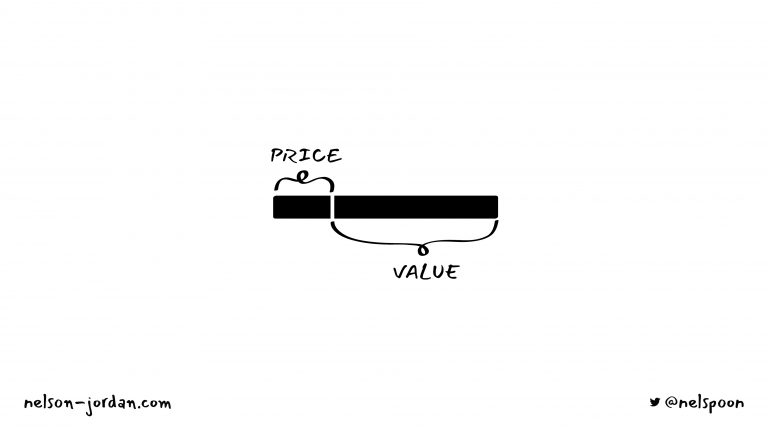
Pricing based on value
When you’re well known in your industry for providing significant value to clients, you can switch to a value-based model. A value-based model isn’t about how long it takes you to create – it’s about the results it generates.
As such, you need to be able to prove you can generate an increase in sales for your client, and the only way you can do that is with experience.
However, it can be a challenging one to work out. For example, a 20% increase in sales to a company that generates £30,000 a month compared to one that earns £300,000 a month is very different. This should also be factored in when putting together your quote.
How to become a freelance copywriter when you have no experience
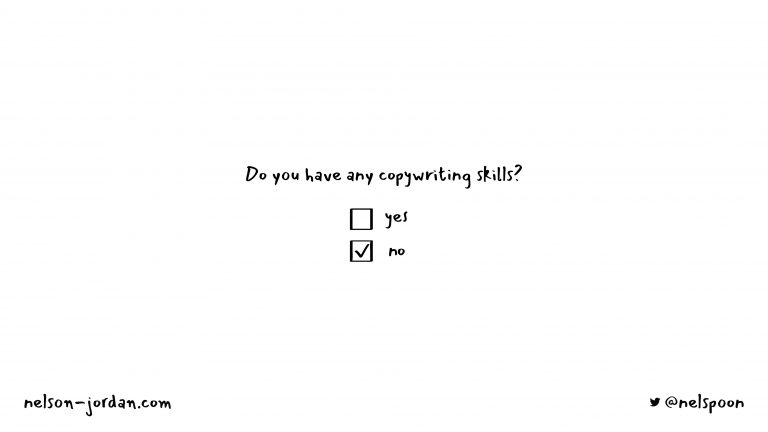
When you first start out on your copywriting career, it can be difficult to know exactly where and how to start. Especially if you don’t know anyone else doing what you want to be doing and you don’t have any writing samples.
So where do you start? I’d recommend you begin by meeting like-minded people who are on the same journey as you, but are a few steps ahead. This may come in the form of a mentor, a coach, or a community.
Becoming part of a copywriting community or monthly membership helps you accelerate your growth, get feedback from experts, receive referrals, grow your network, tap into opportunities for cross-promotion, and more.
Networks are key to getting started and building your confidence. They can coach you, point you to important resources and answer any questions you may have.
There are countless free and paid membership groups for copywriters out there. They’ll each teach you something different. Some are focused on a certain industry or copy specialism. Others focus on mindset, or marketing or gaining more clients.
Free groups are good when you’re starting out, but if you’re looking for more advanced techniques, you’re likely to get more out of a paid group – the people within it will be more experienced and serious about their careers as they’ve invested money in their growth.
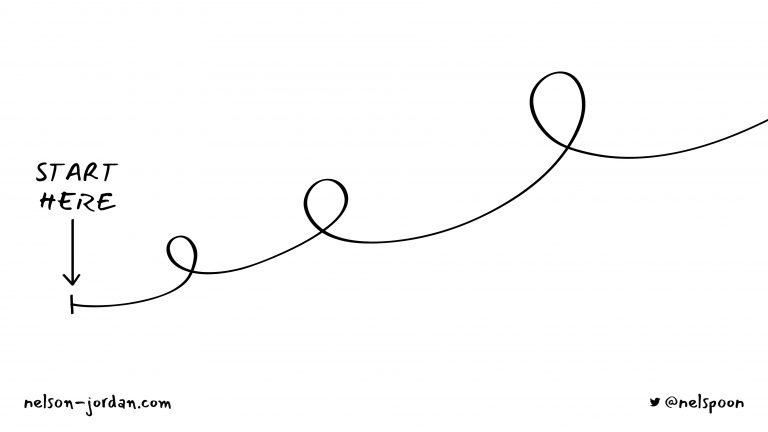
Start writing
This one sounds obvious, but the more pressure you put on yourself to start, the more challenging it will be.
You need to start building your brand and showing off your portfolio as early as possible. The sooner you do this, the sooner prospects can see what you’re capable of and if you’re the right fit for them.
There’s no such thing as too much writing practice, so creating a blog – either on your own site or on a free one like Medium – will help you do this. You can even re-publish blog posts from your site on to Medium. This doesn’t harm your search engine rankings but can increase your audience, helping you attract more clients.

Get the right equipment
Working with the right equipment makes a huge difference to your mindset and productivity levels. There’s nothing more stressful than trying to conduct research with a slow internet connection or writing in an uncomfortable chair.
You want your setup to be as perfect for you as possible, from the mouse and keyboard you use to your software. If you have wrist problems – or want to prevent them – investing in an ergonomic keyboard and mouse will prevent issues and ease them when they appear.
The top of your computer monitor should be at your eye level, and it should face away from a window, so you don’t get screen glare and eye strain.
Most clients will want you to submit work in Google Docs or Microsoft Word. Make sure you establish this working process early on with your clients to avoid confusion further down the road. I prefer Google Docs as it’s easy to comment, leave suggestions, revert to previous versions and collaborate with multiple stakeholders.
To double check your work, it’s always worth investing in grammar/spell checking software such as ProWritingAid or Grammarly. ProWritingAid gives you in-depth insights and is designed by professional writers. It also offers in-person reviews of your writing if you need specific feedback.
Most laptops are capable of handling all the software and apps copywriters need, so if you’ve got one already, you shouldn’t need to replace it (unless you really want to Treat Yo’Self!)
Improve your weak spots
The average copywriter has 11.1 years of experience, according to ProCopywriter’s 2020 report. 32% have studied English Language or Literature, and 51% have taken some sort of copywriting-specific training.
First off, let me say that the data looks a little skewy to me, so I think it’s probably based on ProCopywriter’s members.
Most freelance copywriters I know that are making six figures have far less experience than that, which is good news for those starting out!
But it doesn’t matter how long you’ve been copywriting for; there are always new skills you can learn and new ways to optimise your processes. Keeping an open mind makes it easier to sharpen your skills and makes you more appealing to potential clients.
If you’ve chosen to niche, you also need to research your chosen industry/industries regularly. Each niche has its own trends that come and go, and to best serve your clients, you need to be aware of these.
Subscribe to industry blogs, magazines, and podcasts. Knowing your stuff means you can talk to your client with authority about their industry, as well as copywriting.
How to get your first client

While sites such as Upwork, Fiverr, Freelancer, and PeoplePerHour may have a bit of a shaky reputation among the more established freelancers, they’re where most copywriters start out.
Some even make the majority of their income this way… back in 2014, Danny Margulies made $100k in one year on Upwork.
Sites like these can be helpful for you to find out what clients are looking for and how you can position yourself to serve them best.
But be warned, they’re also well-known for attracting budget-conscious clients who can’t or won’t pay as well as clients you win yourself.
Copywriting job boards are also useful. Freelance Writing Gigs compiles lists of freelance writing jobs from places across the web like Craigslist, Remote.co, and LinkedIn. They post daily and you can quickly skim the list to see if there’s anything relevant.
ProBlogger, meanwhile, charges companies to advertise for freelance writers on its site.
89% of copywriters get new clients from word of mouth. Leaving a positive impression on your clients is therefore vital – you never know who they’ll introduce you to.
But what do you do when you can’t get referrals from clients because you don’t have any clients in the first place? And what do you do when you find clients on these sites?
You PITCH.
How to get clients by pitching

Pitching: you either love it or hate it. Either way, for most freelance copywriters who want to break a certain income level, it’s unavoidable.
The further into your career you get and the more established you become, the less you’ll have to pitch – prospects will come to you based on the strength of your brand – but there’s never any harm in having a strong pitching game.
Regardless of what your level of writing experience is, in your pitch, you must sound confident in your abilities. In an open and honest blog post, freelance writer Elna Cain shares her very first pitch and admits that she doesn’t seem confident.
If you don’t seem confident, do you really expect the reader to be confident in your abilities? You want your prospect to think ‘hey, this guy or gal really knows what they’re talking about.’
When sending pitches, always, always address the person by name. There’s nothing worse than getting an email addressed to ‘dear sir/madam’, ‘website owner’ or ‘Nigel’ (unless your name is Nigel, of course.)
Not including their name – and the company’s name – makes it look like you’ve sent a blanket email to a bunch of people using a template and your focus is getting your name out there, not on providing value.
Simple things like showing you understand the company’s background – maybe even referencing something they’ve done recently – will mean you stand out in inboxes.
Author and blogger, Kristina Adams, receives pitches daily from people wanting to write for her blog, The Writer’s Cookbook. But many of these pitches make a fatal mistake – they don’t refer to the site by name, but by its URL.
This is a clear indication that the person pitching hasn’t done their research and isn’t interested in getting published on The Writer’s Cookbook, but on anywhere they think they can get backlinks from.
To really get someone interested in what you can offer, you need to make it clear how you can help them.
How?
Research your pitch, son!
You need to consider:
Why should they choose you over someone else? What makes you different?
What makes your knowledge and experience right for what they’re trying to do?
What do you think the business’s objectives are for the next 3, 6, 12 months and where do you fit in?
How well do you understand their audience?
The writing rule of showing, not telling, is crucial here. If you show what you can do for your prospect, it will build an image in their head of what working with you could look and feel like. And what it could do for their business.
Including two or three relevant examples in your pitch is an important part of this. You don’t want to bombard them with reading materials – they’re unlikely to read it all – but two or three examples that you wrote for the same or a similar audience will show your understanding of the market and its challenges.
If you have it, you could also include social proof in your pitch. This could be a testimonial, case study, or statistics showing how you’ve helped clients in the past.
Social proof reassures people they’re in safe hands and you really can deliver what you promise.
Here are two real examples so you can see what I mean (hopefully you’ve loved the rest of this article and you’ll forgive me one brief moment of self-indulgence…)
I grew an established ecommerce food company’s organic traffic by more than 50% within nine months.
I also grew a B2B/B2C plumbing business’s revenue by 242% in less than six months, putting them on-track for their first ever seven-figure year.
Now if you run an ecommerce business, work in the food or plumbing industry, or need to grow your revenue and organic traffic, you start to think ‘hey, I do that. I wonder if Nelson can help me?’
Even if you’re not in those industries, I’ve just shown that I can deliver results. Results which I can no doubt achieve for your business.
So, what results can you show as a brand-new freelancer? This is where writing for yourself really pays dividends. You don’t even have to create your own website if your budget is tight – you can use a free platform like Medium to showcase your writing. Just make sure to keep track of the important metrics and then use them in your next pitch!
It’s worth noting that most of your pitches probably won’t be successful, especially at the beginning, but you shouldn’t let that deter you.
When someone rejects or ignores your pitch just remember it isn’t necessarily a reflection on you, or the quality of your work. It might just mean that they’re not looking for a copywriter right now or they don’t have the budget.
To niche, or not to niche?

49% of copywriters don’t have a niche. Most who do specialise in disciplines such as digital or SEO, rather than in particular sectors.
Whether you should niche or not is a question many copywriters ask themselves on a daily basis. There are plenty of arguments for niching, and plenty of arguments against it.
Please note that this is totally, 100% just my opinion and you should feel free to disregard it, but I believe when you’re just getting started it’s better not to pick a niche.
I didn’t have a niche when I began. I chose to write many different types of copy, ranging from social media ads to landing pages and email automations for clients in industries as diverse as SaaS, finance, dog training, health and fitness, photography and real estate.
By shunning the ‘you must niche to be successful’ mentality, you get to experience the challenge of writing different types of copy for a variety of audiences.
Not only will this improve your skills faster, it will also make it easier for you to find something you enjoy and identify your strengths as a copywriter.
After you’ve finished each project, ask yourself ‘did I enjoy that?’ Would you like to do more of it? Remember to dig into the results you generated for your client, too.
Keep a note of how you feel about each project, then come back to your notes periodically to look for patterns. Did you generate some really great results for a SaaS company’s landing page rewrite? Did you hate writing social media ad campaigns?
The more you do, the more you learn about what you’re good at and what you enjoy…and what feels like pulling teeth.
The most successful freelancers are the most selective freelancers.
— Danny Margulies (@OmahaCopywriter) December 4, 2020
Resources for freelance copywriters
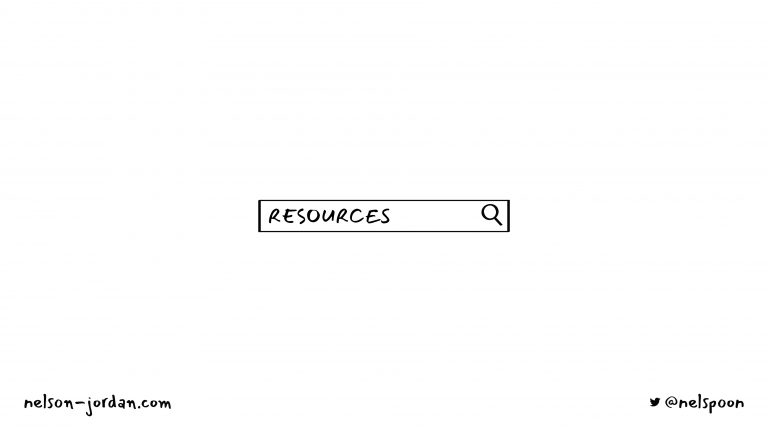
There’s so much copywriting advice out there already it can be tough to know where to start.
Well, how about here?
I’ve compiled a list of some of my favourite copywriting resources on the internet.
Blogs and social media
Café Writer
Café Writer is a Facebook group set up by copywriter and author Steve Roller. Some members are more advanced in their careers, while others are just starting out. It’s an open and supportive community where you can ask questions and get honest answers.
Copy Hackers
Copy Hackers has a library of in-depth blog posts that break down different aspects of copywriting. They also have weekly video tutorials called Tutorial Tuesdays, and a free copywriting course that starts with the basics and transitions into more advanced techniques.
Copyblogger
Copyblogger is one of the oldest copywriting sites out there. It covers more basic areas than some other sites on this list, but that doesn’t mean its content is bad – in fact, it makes it the perfect place to start or refresh yourself on a half-forgotten topic.
Pro Copywriters
Every year, Pro Copywriters put together a survey on the current copywriting landscape. It contains everything from the average rate of pay, to how many hours copywriters work. They also have a blog.
Punchline Copy
Owner of Punchline Copy, Lianna Patch, uses her comedy skills to write better converting copy. Her copy and content are filled with great puns and cat photos (what’s not to love?!) Her emails and blog posts are full of copywriting tips, and of course, comedy.
love being reminded that i invented my dream job pic.twitter.com/N6fHg4ebI8
— Lianna Patch #BlackLivesMatter (@punchlinecopy) November 21, 2020
Copywriting courses

The Copy Cure
Entrepreneur Marie Forleo and writer Laura Belgray created The Copy Cure. Laura started out writing for TV and now writes high-converting copy for all kinds of brands.
Signups open a handful of times a year. If you join through an affiliate, you often get bonus courses on topics like PR, too.
Copy School by Copy Hackers
This is an in-depth course that often compares itself to a university degree. It comes with as much content, if not more. There are five modules which explore different aspects of copywriting including email writing, long-form sales pages, landing pages, and Facebook Ads.
The classes are easy to follow but require a lot of time investment to get through them, and the sometimes complex methodologies can be overwhelming if you’re just starting out.
Signups open once or twice a year for a few weeks at a time. If you’re not sure copywriting is for you, then I’d give this one a wide berth – there are cheaper options that are easier for a beginner to access.
However, if you’re determined to become a successful freelance copywriter and you have the budget to invest, I’d highly recommend Copy School.
jacobmcmillen.com
I tried something stupid. I tried to make the most comprehensive guide to website copywriting available free online. Featuring @sr4Partners @UseProof @brillmarkllc @TheRyanRobinson @TheBillWidmer @ConvertKit @thegoodtrade @elegantthemes @ugmonk https://t.co/3AodeH7R8U
— Jacob McMillen (@jmcmillen89) November 6, 2019
Jacob McMillen’s free course walks you through how he went from earning $15 per article to $15,000 per month. It explores what types of writing are the most lucrative, and how you can start finding people willing to pay you these rates.
I know Jacob personally and he’s a lovely dude!
Kopywriting Kourse
If you can look past the (hopefully) intentional misspelling, this course is designed to help entrepreneurs, writers, and sales teams become better copywriters. It’s been featured in an impressive list of publications, from Forbes to Hubspot. They also offer private consulting.
Tyler Koenig
Tyler has a fun approach to copywriting, making sports jokes even on his homepage. He has two courses: one on the pillars of persuasion (to help with your persuasive writing skills), and another on building trust with your audience using sales copy.
I also know Tyler and having taken his Pillars of Persuasion course, I can confirm that he does indeed know his stuff.
I like this a lot. Using bold paragraph copy as sub-headlines for a mini-story makes life easy for your reader.
— Tyler J. Koenig (@tylerjkoenig) October 29, 2020
No doubt they’ll circle back re-read it all much more carefully. pic.twitter.com/Yg6x17TbsT
Freelancing courses
jacobmcmillen.com
Jacob’s paid freelancing course teaches you the writing skills and the freelancing skills you need to succeed. It covers how to get new clients, building your authority, and the key to all great writing careers: pitching.
10x Freelancer by Copy Hackers
The Copy Hackers crew don’t want you to be a member of 10x Freelancers forever. That’s right: they feel they’ve failed if you pay for more than a year.
If you enrol, you’ll get everything from accountability to how-to guides. It’s as in-depth as they come, ready to set you up for success not just now, but for the rest of your career.
Conclusion
Phew! There you have it – how to become a freelance copywriter in 2021!
While the landscape is always changing, the basics – such as how to tap into your client’s needs and understand their customers – don’t change.
Knowing where to start can be overwhelming. That’s why guides like this, online (and offline, when possible) communities, events, and sites like UpWork can help. There, you’ll get advice from more experienced writers and help building your portfolio.
Pitching is an important part of being a freelance copywriter. If you find your pitch isn’t converting, make a note of it, then refine it to see if that improves your conversion rates. Keep iterating – you never know what small changes could lead to big rewards.
Over time, as your brand grows, you’ll find the strength of your brand will attract clients on its own.
As you become more experienced, not only will you be able to write faster, but you’ll also be able to charge more because you’ll have results to prove your techniques work.
You’ll then be able to work in a more flexible way, whether that’s while the kids are at school, in the middle of the night, or even part-time.
The beauty of freelance copywriting is that it’s completely flexible. You can work however you want! It’s all about knowing what your strengths are and what you want to achieve in your business.
What comes next? Well, that’s up to you!
I hope you found this guide to becoming a freelance copywriter in 2021 valuable. If so, I’d appreciate it if you could share with anyone else you think would benefit from it.
Good luck and feel free to connect with me on LinkedIn to let me know how you’re progressing!

